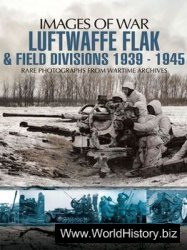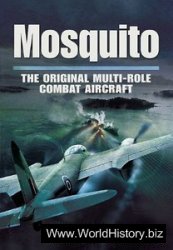The villagers at Deir el-Medina were provided with all their basic needs but they had time and resources for some free enterprise. They must have helped each other construct their own tombs, bartered surplus goods, and accumulated some extra income, or at least a store of saved crops. Owners of donkeys hired them out to the local water-carriers. Earlier sources give us further details of economic life in Egypt. The letters of Heqanakhte, a farmer from the Eleventh Dynasty, to his family date from 1950 bc. Heqanakhte did not own his land but had some accumulated ‘capital’ of grain, copper, oil, and flax that he could use for barter or to pay his rent in advance. He had a second income from his position as ka-servant, responsible for keeping an eye on the tomb of one Ipi, the vizier of Mentuhotep II. Now he is getting on in years and has become querulous. Although he has delegated his affairs to his sons he is not ready to give up control. He berates one of the sons, Merisu, for his slackness: ‘Put your back into the ploughing, do your utmost, look after my seed corn, look after all my property. See, I consider you responsible for it! . . . Hoe all my land, sieve with the sieve, hack with your noses into the work.’ He complains that Merisu had sent him dried-out old barley instead of the season’s new crop and that he does not treat the youngest son, Sneferu, his father’s favourite, with enough care. Sneferu is to be sent home to his father as soon as the ploughing is complete. He is equally annoyed by his sons’ failure to respect his new young wife, Iutenheb, whom they have abused. (For the life of Heqanakhte and other ‘ordinary’ Egyptians, see John Ray, Reflections of Osiris: Lives from Ancient Egypt, London, 2001.)
There must have been other opportunities for trading activities. Pictures survive of traders sitting by the dockside selling goods that have come off moored boats. A record of the range of goods involved in what appears to be a bill of lading of a Nile riverboat from about 1137 bc includes jars of sesame oil and wine, olives, gourds, salt, gutted fish (no less than 5,000 of them) and the heads of gutted waterfowl, 110 bundles of sedge, and fifty papyrus rolls. It confirms the picture given by the Ulubu-run shipwreck in which trade involves many small quantities of different commodities. Much of this informal trade was carried out by the shuty. The shuty were primarily in the employ of the state or a temple but ready to use the opportunity to accumulate spare goods which they could then sell on the side. Records of grave robberies in the late New Kingdom suggest it was the shuty who were the most likely middlemen for the stolen goods.
The system of exchange for surplus goods was based on a unit of weight, the deben of about 90 grams. A deben could be calculated in gold, silver, or copper, with the value the greater the more precious the metal. A deben in silver, for instance, was worth about a hundred times one in copper. A transaction by a scribe, Pena-nouqit, has survived. Penanouqit wanted to sell an ox that was valued, in copper, at 130 deben. In return he accumulated a linen tunic valued at 60 deben, two others worth 10 deben each, 30 deben worth of beads for a necklace, and the remaining
20 deben in grain. The Egyptians never developed any exchange system involving coins (which first appear in the country about 400 bc).
As mathematicians the Egyptians were pragmatic and focused on the solution of specific administrative and architectural problems. Arithmetic and geometry, which were not distinguished, were used to add up wages, to calculate the volumes of granaries and the areas of fields (particularly important when the floods went down and the land had to be marked out again), to collect taxes, and to calculate the number of bricks needed for a planned building. The basic procedures appear to have been in place as early as 3500 bc and remained essentially undeveloped until the arrival of the Greeks more than 3,000 years later. The two major mathematical texts, the Moscow and Rhind papyri (the latter now in the British Museum), are essentially lists of problems and their solutions that a scribe would have consulted when he needed to. A typical problem was how to share out a fixed number of loaves of bread or jugs of beer between people of different status, some of whom had the right to more than others. The Egyptians were hampered by their inability in general to use fractions with a numerator higher than one, so that if they wanted to record %, for instance, they had to build it up as % plus % plus %, while 6/7 becomes % plus % plus % plus 1/28. Quick calculations were only possible through the use of prepared tables.
There was more success with geometry. The Egyptians knew that triangles in the ratio 3:4:5 had a right-angle opposite the hypotenuse and they appear to have used ropes with these proportions marked by knots when they wanted to create a right angle. They could calculate the areas of triangles, and in the measurement of circles calculated pi to the decimal equivalent of 3.16 remarkably close to the actual figure of 3.1416. They could also work out the angles of pyramids. Measurements were in the ‘royal cubit, about the same length as a man’s forearm, a picture of which was used for the hieroglyph for cubit. An area of 100 royal cubits, known as a setjat, was used as a measure of land.
The rigid adherence to using numbers only for practical issues meant that the Egyptians never developed any conception of mathematics as a science. The historian of mathematics Morris Kline sums up their limitations: ‘There was almost no symbolism, hardly any conscious thought about abstraction, no formulation of general methodology, and no concept of proof or even plausible argument that might convince one of the correctness of a procedure or formula.’ This sober assessment needs to be remembered when the Egyptians are portrayed as possessing some kind of higher wisdom. In many ways their intellectual skills remained rudimentary even if in other respects they were sophisticated survivors.




 World History
World History









